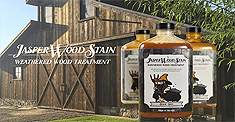Improve Your Productivity with These Woodworking Tips
Woodworking requires patience and perseverance, as your hard work and skill transforms lumber into the final product you’ll use. Be it a table, cabinet, flooring or entire shed, the time and effort will pay off. But you can always make it easier on yourself with a few time and energy-saving techniques. Seasoned woodworkers will know these well, but for amateurs who are just starting out, a few tips can go a long way. Here are some woodworking tips:
Keep Your Workspace Clean and Organized
Don’t just leave your tools where you last used them. And be sure to clean up all the wooden bits and chunks. You want a safe workspace and organizing the placement of your tools and supplies will help you get into the groove and get to business much faster than if they were just scattered all over the place. Keep the tools you use often conveniently close by, whereas the more specialized and infrequently used ones can be stored away. This will decrease the risk of losing or misplacing tools and save you the cost of replacing ‘em.
Get Good Lighting
On that note, make sure your work area is well-lit. Illumination should be consistent and ample so you can work from any angle without obscuring your bench with shadows. So you want good overhead lighting, focused lights for specific parts, on-tool lights as well, and having surrounding surfaces like walls and ceilings painted in colors that will help spread the light.
Sharp Tools Make Life Easier
Just like in the kitchen, sharp tools will help you make clean cuts, which in turn means that the finished pieces will fit together well. On the other hand, dull tools will result in jagged edges that won’t fit well – it’ll look like sub-par amateurish craftsmanship. Sharp tools are also important for polishing your final product, giving them a smooth and professionally-made look. So keep your blades sharp, and if they’re dulling then get them sharpened!
Take Accurate Measurements
Use a drafting square to make accurate measurements and mark layouts. This will help make the process go much easier and so much more convenient. Remember, you can’t just go by “gut feeling” or by eyeballing, because if you’re off by just an inch then you might have to rework the entire piece or get a new one entirely – which is a major pain in the rear.
Don’t Use Drywell Screws
Use normal wood screws for better results. Drywell screws have a high possibility of breakage, especially of the wood you’re using is hard. Removing them later on is going to be hard too since they’re brittle and will damage the wood surface when they’re being taken out. Normal wood screws are softer and easier to work with most of the time.
Know the Moisture Content of Your Wood
This is really important! Moisture content makes a lot of difference in how you handle wood. If it’s low then the final product might be prone to breaking from cracks, whereas if it’s too high the wood will be prone to distorting. It’s a big factor in how your final product will turn out.






